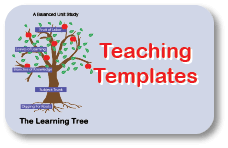Games to Teach Reading
A list of games to teach reading and reinforce reading skills in the early elementary years. Games provide variety and pique motivation while giving practice and reinforcement.
10 ideas for games that teach reading
Check out these ten games. Before you get to the bottom, your mind will likely be racing with other reading game ideas.Come back, and share new ideas!
Reading Block by Block
Here's one of the games to teach reading that will be enjoyed by your kinetic learners.Use a linoleum floor that has distinct blocks. Other options include cement side walks with squares, large game boards with squares, or create blocks by lying carpet pieces or paper on the floor.
On each square, place a card of one of the reading words face down.
The student starts at the first square, turns the card over and reads it. If he gets it right, he moves to the next square. There, he turns it over and reads that word, and continues until a word is wrong.
If a word is missed, the student has to start at the beginning again. A delay of several seconds is created as the leader has to set new word cards face down on the squares.
For added excitement, time the game. The student has to see if he or she can race across all the squares before the bell rings.
Reading Signs - A Traveling Game
Ask your child to read signs, and you count how many he or she can read in five minutes (or any other length of time.)At first young readers will only be able to read single words. Eventually they will be able to read phrases. As their reading ability progresses, they will start to read the sentences on billboards.
There may be frustration that the vehicle moves too fast for them to read the entire sign. Count how many words in a sign they can read.
This is not a competitive game, but a contest with their former scores. You should do the counting so they can focus on reading.
Look for other games to teach reading that can be done while traveling in the car.
Mother May I
This take off of an old classic is one of the games to teach reading that can be used with one child or a group. Have the child (or children if you are teaching a group) stand with their back against a wall. Show a reading card. If they read the word correctly they take a step forward.Different levels of reading words can be used with children of different ages.
This same activity can be used with spelling words as well as reading words.
Phonics Activities and Games to Teach Reading
We recommend a dual approach of teaching phonics families and common sight words simultaneously. You might be interested in some of the phonics activities and word games to reinforce reading skills. There are suggested games to teach reading words.There are also lists of suggested sight words and phonic families for kindergarten, and first grade, and second grade.
Reading Confidence Cards
These cards provide a game like activity as well as the ability to read sentences which repeat high frequency words. Each set of cards reinforces one phonics/reading skill. All of the cards reinforce the most common sight words as well.Each set has a different activity for students to do. For instance, they might match cards to objects, build something with blocks, or make a map.
The cards are for beginning readers in Kindergarten or 1st Grade.
Check out the Reading Confidence Cards. Free download available at this site.
Erudition
For younger children, this is the best reading game we have found. The set of playing cards contain almost all of the high frequency words, divided by reading level.The colorful game board attracts young readers as they move their marker across the town. Every turn the student has a chance to read a card, and is rewarded with a bonus turn if it is read quickly; building motiviation and postive reinforcement.
This game has become so popular in our house, that we have used it to review spelling words once all the reading words were mastered. Read more about this award winning game.
Ages 4 - 7
Reading For Pennies
This is an oral reading game that can be used with one to three children.Choose a short segment for the child to read. It should be at least one sentence, but no longer than two paragraphs. A short poem or the first paragraph of a grade appropriate book work well.
If you are doing this with more than one child, it usually works better if they are reading different sentences.
You will need five pennies or other tokens for each child.
Have each child read their selection one time. Give them a penny. Then, with them following along, you read it out loud to them. This models correct pronunciation, expression, and pauses with grammar.
Then let the other child or children read their selection. Again, give a penny to them.
Usually with the first reading there are pauses as they sound out words, and struggle with smooth oral reading. This is to be expected of young readers with the first reading. The goal is to aim for improvement in decoding, oral reading, and comprehension with this activity.
They earn the second penny by re-reading their selection a second time. This time, count how many "glitches" the student has. A glitch is:
- pausing to sound out a word
- mispronouncing a word
- not using punctuation marks for expression
With each reading, they earn another penny if they read more fluently and with fewer "glitches."
Reading Challenge
Keep a log of the books your child reads over a year (or a summer, or semester, etc.) List how many pages he or she read in each book.I give my students one point for each page read, if the book is on grade level. If it is easier or harder, I add or deduct accordingly. (This is slightly subjective, but I try to keep it fair.)
You can make a contest between students to see who reads the most. Or you can give a reward for reaching a certain number of pages or points. In our family, 1000 points earns a meal alone at a restaurant with their father. However, there are numerous other incentives that could be offered as well.
Board Games
Many board games have cards that children must read in order to play. Monopoly would be one example, though there are many others. You will notice an increase in the student's fluency after playing the game a few times. Repetition, competition, and desire to read as smoothly as the other players work together to increase reading fluency.More Reading Activities
See our page for more fun reading activities. Do you have ideas for other games to teach reading? Share your suggestions for reading activities that you and your students enjoy.About Our Site
Hands-On Learning












